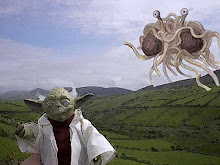Associated Press
NEW ORLEANS - With a historic evacuation of nearly 2 million people from the Louisiana coast complete, gun-toting police and National Guardsmen stood watch as rain started to fall on this city's empty streets Sunday night -- and even presidential politics took a back seat as the nation waited to see if Hurricane Gustav would be another Katrina. |  |
| The storm was set to crash ashore late Monday morning with frightful force, testing the three years of planning and rebuilding that followed Katrina's devastating blow to the Gulf Coast. The storm has already killed at least 94 people on its path through the Caribbean. |  |
Painfully aware of the failings that led to more than 1,600 deaths during Katrina, this time officials moved beyond merely insisting tourists and residents leave south Louisiana. They threatened to put looters behind bars, loaded thousands onto buses and warned that anyone who remained behind would not be rescued. They were confident that they had done all they could. "It's amazing. It makes me feel really good that so many people are saying, 'We as Americans, we as the world, have to get this right this time,"' New Orleans Mayor Ray Nagin said late Sunday. "We cannot afford to screw up again." Col. Mike Edmondson, state police commander, said he believed that 90 percent of the population had fled the Louisiana coast. The exodus of 1.9 million people is the largest evacuation in state history, and thousands more had left from Mississippi, Alabama and flood-prone southeast Texas. Late Sunday, Gov. Bobby Jindal issued one last plea to the roughly 100,000 people still left on the coast: "If you've not evacuated, please do so. There are still a few hours left." Louisiana and Mississippi temporarily changed traffic flow so all highway lanes led away from the coast, and cars were packed bumper-to-bumper. Stores and restaurants shut down, hotels closed and windows were boarded up. Some who planned to stay changed their mind at the last second, not willing to risk the worst. "I was trying to get situated at home. I was trying to get things so it would be halfway safe," said 46-year-old painter Jerry Williams, who showed up at the city's Union Station to catch one of the last buses out of town. "You're torn. Do you leave it and worry about it, or do you stay and worry about living?" There were frightening comparisons between Gustav and Katrina, which flooded 80 percent of New Orleans. There was no doubt the storm posed a major threat to the partially rebuilt city and the flood-prone coasts of Louisiana and southeast Texas. Mindful of the potential for disaster, the Republican Party scaled back its normally jubilant convention -- set to kick off as Gustav crashed ashore. President Bush said he would skip the convention altogether, and Sen. John McCain visited Jackson, Miss., on Sunday as his campaign rewrote the script for the convention to emphasize a commitment to helping people. The nation's economic attention was focused on Gustav's effect on refineries and offshore petroleum production rigs. The combination of prolonged production interruptions, such as occurred when Katrina and Rita damaged the Gulf infrastructure, could trigger rising prices. Billions of dollars were at stake in other wide-ranging economic sectors, including sugar harvesting, the shipping business and tourism. The Mississippi Gaming Commission ordered a dozen casinos to close. Forecasters said Gustav could strengthen slightly as it marched toward the coast. At 11 p.m. EDT Sunday, the National Hurricane Center said Gustav was centered about 220 miles southeast of New Orleans and was moving northwest near 16 mph. It had top sustained winds of 115 mph, and was likely to stay a Category 3 storm when it made landfall west of New Orleans. Category 3 storms have winds between 111 mph and 130 mph. Rain started falling in New Orleans before sunset, and tropical storm-force winds had reached the southeastern tip of the state. New Orleans will likely be on the "dirty" side of the storm -- where rainfall is heaviest and tornadoes are possible, but the storm surge is lower. If forecasts hold, the city would experience a storm surge of only 4 to 6 feet, compared to a surge of 10 to 14 feet at the site of landfall, said Corey Walton, a hurricane support meteorologist with the National Hurricane Center. Katrina, by comparison, brought a storm surge of 25 feet. Surge models suggest large areas of southeast Louisiana, including parts of the greater New Orleans area, could be flooded by several feet of water. But Gustav appears most likely to overwhelm the levees west of the city that have for decades been underfunded and neglected and are years from an update. Against all warnings, some gambled and decided to face the storm's wrath. On an otherwise deserted commercial block of downtown Lafayette, about 135 miles west of the city, Tim Schooler removed the awnings from his photography studio. He thought about evacuating Sunday before deciding he was better off riding out the storm at home with his wife, Nona. "There's really no place to go. All the hotels are booked up to Little Rock and beyond," he said. "We're just hoping for the best." The final train out of New Orleans left with fewer than 100 people on board, while one of the last buses to make the rounds of the city pulled into Union Station empty. Police made final rounds around 7 p.m. Every officer in the department was on duty, and the 1,200 on the street were joined by 1,500 National Guardsmen. The only sign of life on St. Bernard Avenue -- a four-lane artery through the partially rebuilt Gentilly neighborhood that flooded during Katrina -- was a brown and black rooster meandering along the street. Read the rest here. |












